Ray Hahn
Edward Tuckerman Potter
America’s Episcopal Architect
Buckminster Fuller once commented, “When I’m working a project, I never think about beauty, but when I’m finished, if my solution is not beautiful, I know it’s wrong.”
It could be Edward Tuckerman Potter was never wrong!
When Edward Potter decided to take advantage of a well-earned retirement. he moved his family to Newport, Rhode Island. His new address was 25 Catherine Street; he wasn’t on Belleview Avenue (often called Millionaire’s Row) but he was within walking distance.
It is undetermined if Potter had a hand in any remodeling, but we do know that his new home was built in 1860 and had seven bedrooms and seven baths. The house has 7,062 square feet on four floors – counting a widow’s walk tower.
Edward and his wife Julia were 68 and 64 at the time, their two youngest daughters Louisa and Dorothy were 25 and 20. (The couple’s other five children, Julian, Ethelinda S., Edward F., Robert F., and Richard R., had married or left the home. Ethelina married her first cousin, Howard about whom you will learn more.) Along with the four family members, seven servants occupied a rear extension where Mrs. Kelly, their Irish cook, lived with Bridget Sullivan, the scullery maid. Three other maids and a stable boy named Johnny Hatch occupied the premises.
Edward T. Potter was born in Schenectady, New York in 1831. He was the son of Alonzo Potter and Sarah Nott. Alonzo Potter was a Bishop in the Episcopal Church of the United States having served the diocese of Pennsylvania for more than twenty years. Edward’s mother Sarah was the daughter of Eliphalet Nott, the president of Union College, a private liberal arts college in Schenectady. The Reverend Nott was acclaimed in his own right for being the longest serving college president – 62 years – in American history. It can be stated without contradiction that both families had gathered superlatives long before Edward made his mark in the world of architecture.
Potter is widely known today for two buildings he designed in mid-career – Mark Twain’s home in Hartford, Connecticut, and Nott Memorial Hall on the campus of Union College – both of which are National Historic Landmarks.
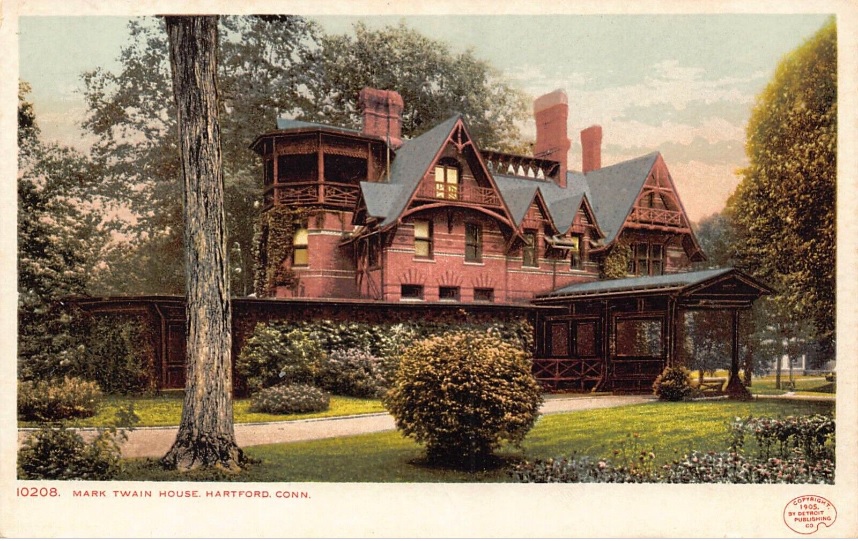
Samuel Langhorne Clemens was born in 1835 in Missouri. After his successful career as a riverboat captain, he moved to Connecticut where he felt more at ease working on what would become some of America’s bestselling and most loved novels.
Edward Potter was engaged by Sam and Olivia Clemens to build a “dream” house for them and their three daughters – Clara, Susy, and Jean. This Detroit Publishing Company postcard shows the Mark Twain House circa 1906, at least three years after Samuel and Olivia Clemens sold their remarkable mansion to the Richard Bissell family in 1903.
The Bissells lived in the house until 1917, but in 1922 the house was sold to a developer, who immediately made plans to turn the house into an apartment building. It never happened.

The Nott Memorial Library is a sixteen-sided stone-masonry building. One of only a few in the world. It serves as the centerpiece of Union College of which Edward Potter’s grandfather was president. Potter devoted several years of his life to the completion of this memorial – simply because it would bear the name of his grandfather. Construction began in 1858 and took twenty-one years.
The appellation attached to Potter’s name in the title, the Episcopal Architect, is one added with admiration and recognition of accomplishment. To achieve notoriety by having your name appear on the United States National Register of Historic Places is for an architect a high honor – Potter’s name appears fourteen – perhaps more – times.
In addition to the Nott Memorial and the Mark Twain home (1871), Potter is also remembered as the creator of Samuel Colt’s palatial home (1862) known as Armsmear, also in Hartford, Connecticut.
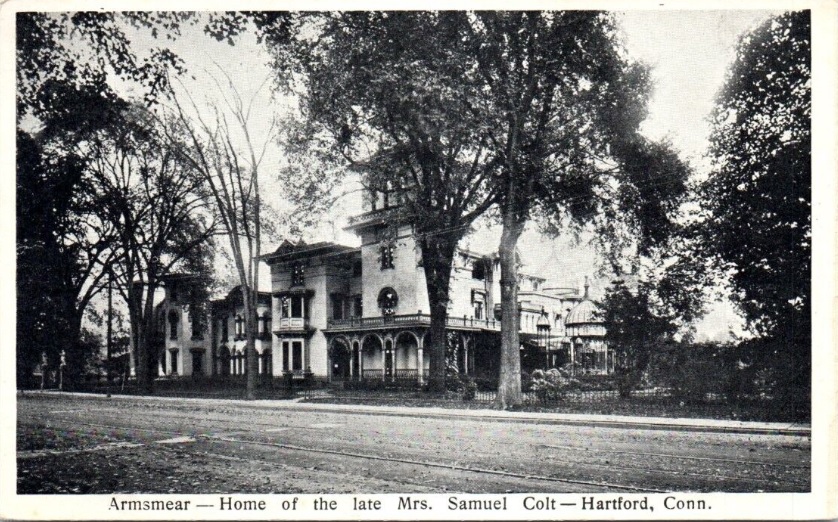
And what justifies his being called the Episcopal Architect are his ten (or more) churches across the country. The following list is probably incomplete:
Additions to the Christ Episcopal Church (1862) Reading, Pennsylvania.
St. James Episcopal Church (1863) Lewiston, Illinois.
Cathedral of the Nativity (1864) Bethlehem, Pennsylvania.
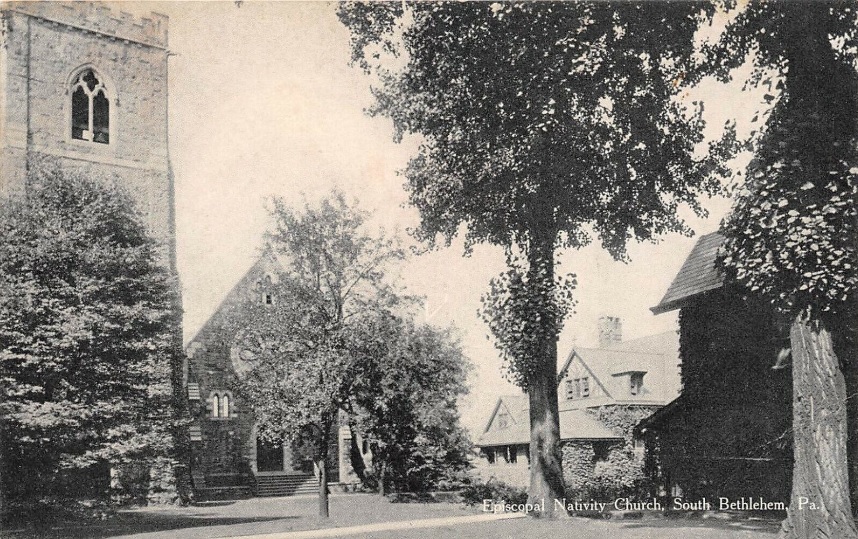
St. Paul’s Episcopalian Church (1866) Staten Island, New York.
Church of the Good Shepherd (1867) Hartford, Connecticut.
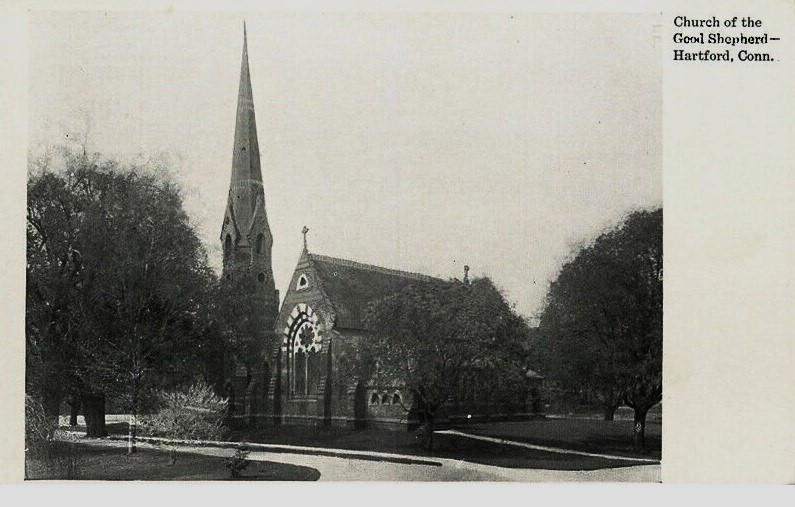
St. John’s Episcopal Church (1867) East Hartford, Connecticut.
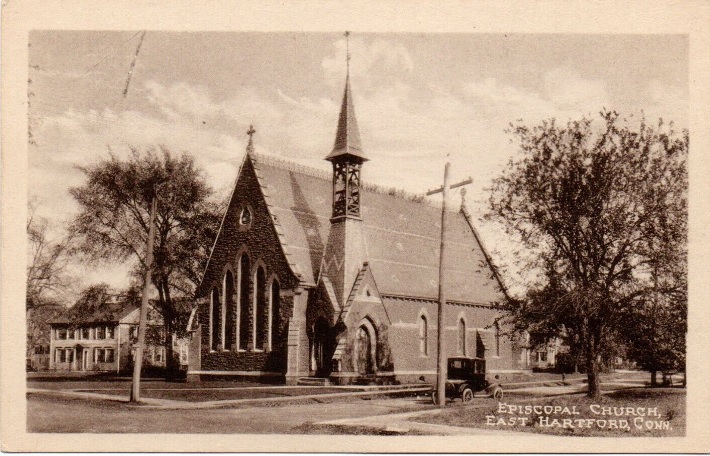
All Saints Memorial Church (1869) Providence, Rhode Island.
Church of the Holy Innocents (1872) Hoboken, New Jersey.
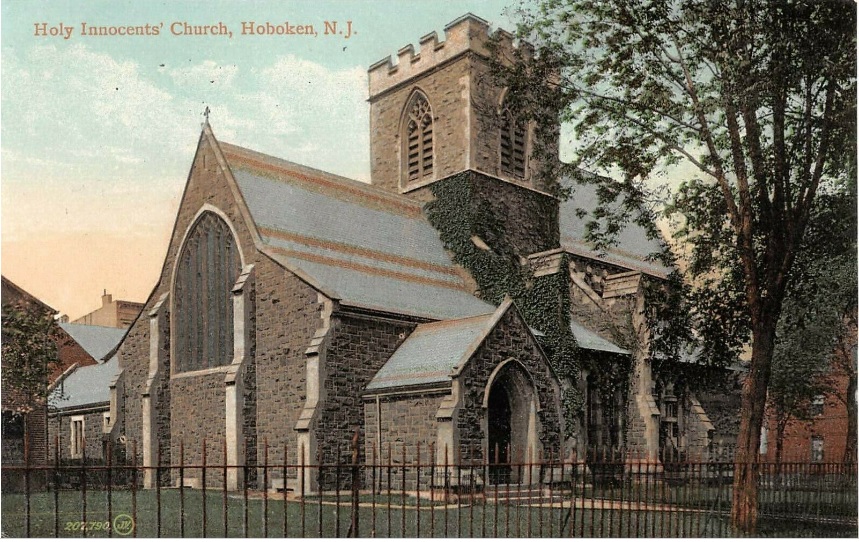
Trinity Episcopal Cathedral (1873) Davenport, Iowa. §
St. John’s Protestant Episcopal Church (1874) Yonkers, New York.
Edward Potter died on December 21, 1904, but the Potter Family tradition of building churches continued with his paternal nephew and his daughter’s husband, Howard. Howard was the architect-of-record when the St. John’s Episcopal Church in Jacksonville, Florida, was completed in 1907. He was a named partner in the firm of Snelling and Potter.
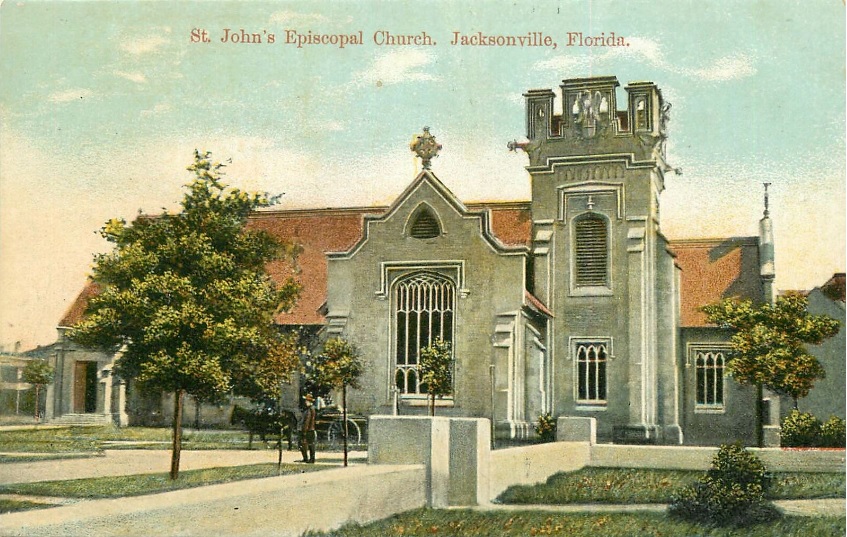
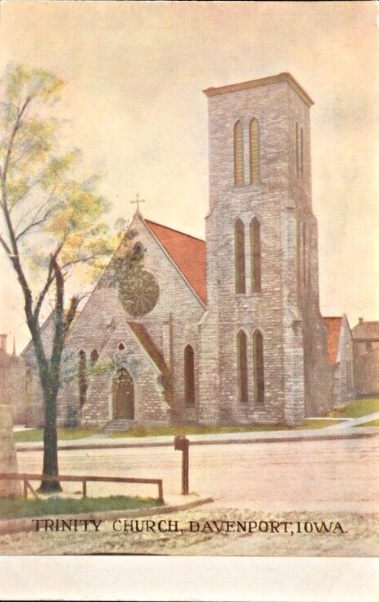

Great article. I have visited Mark Twain’s home, but did not know of Potter’s other creations in Hartford
This was a fascinating story! I love reading the history of the different people who helped develop this country.
Appropriately enough, the first floor of the Clemens home served as the Mark Twain Branch of the Hartford Public Library from 1930 to 1956.
Just love being part of this group. Nearly every article is interesting and the cards fascinating. This particular article is among my favorites! Great research. just the right length for me. A wonderful “snack food” of sorts for my mind and my soul. Such beauty, such wonder at how humans can be so creative and productive. It’s a link with our past, and I feel better about life having read the article.
Thanks for all the beautiful cards of churches. I’m interested in architecture and had an uncle who wanted to study that, but in the difficult times of the 30’s had t0 make a living for himself and his wife by driving a truck. Quite a step down ! I am also interested in genealogy as well as the history of western states and nearby places in California.